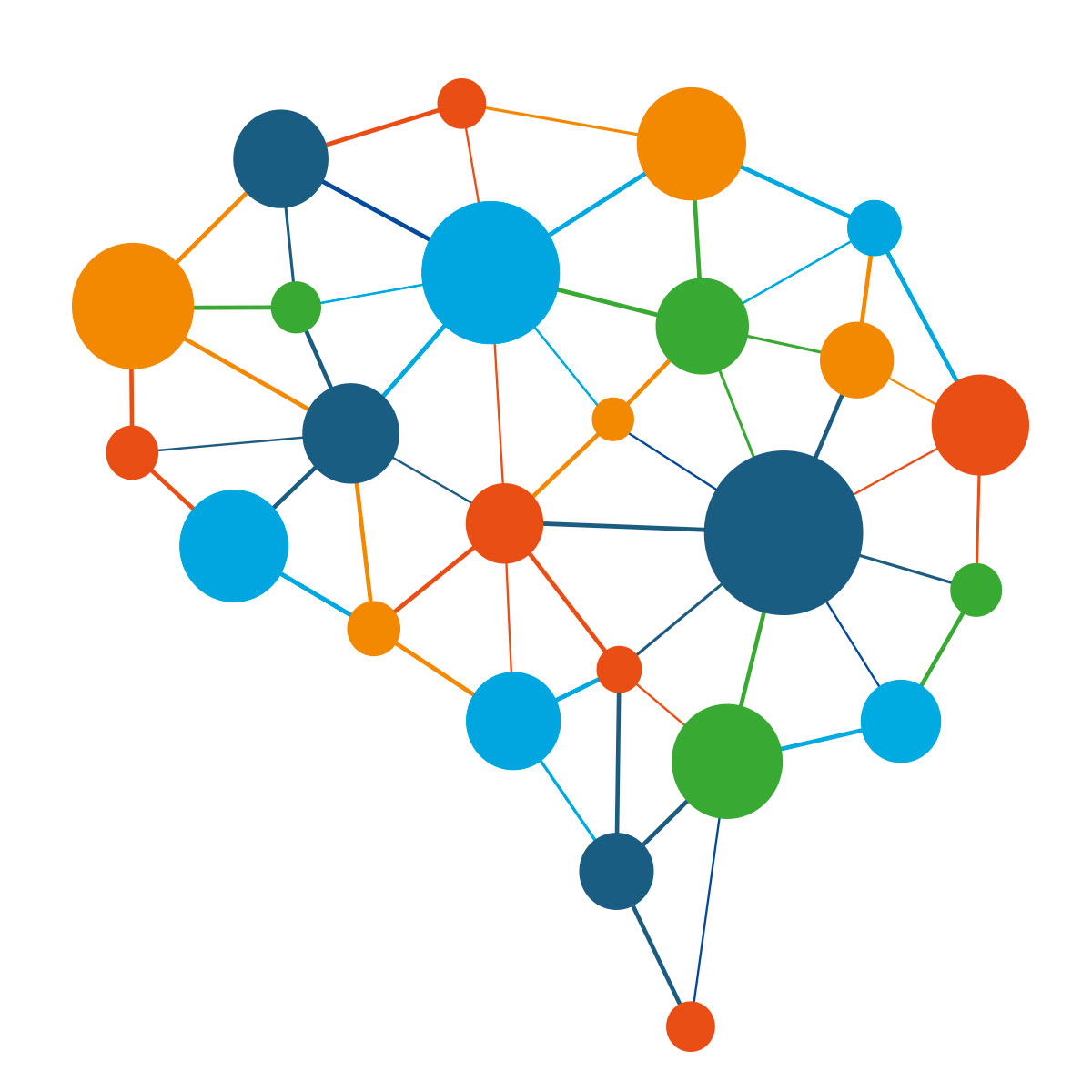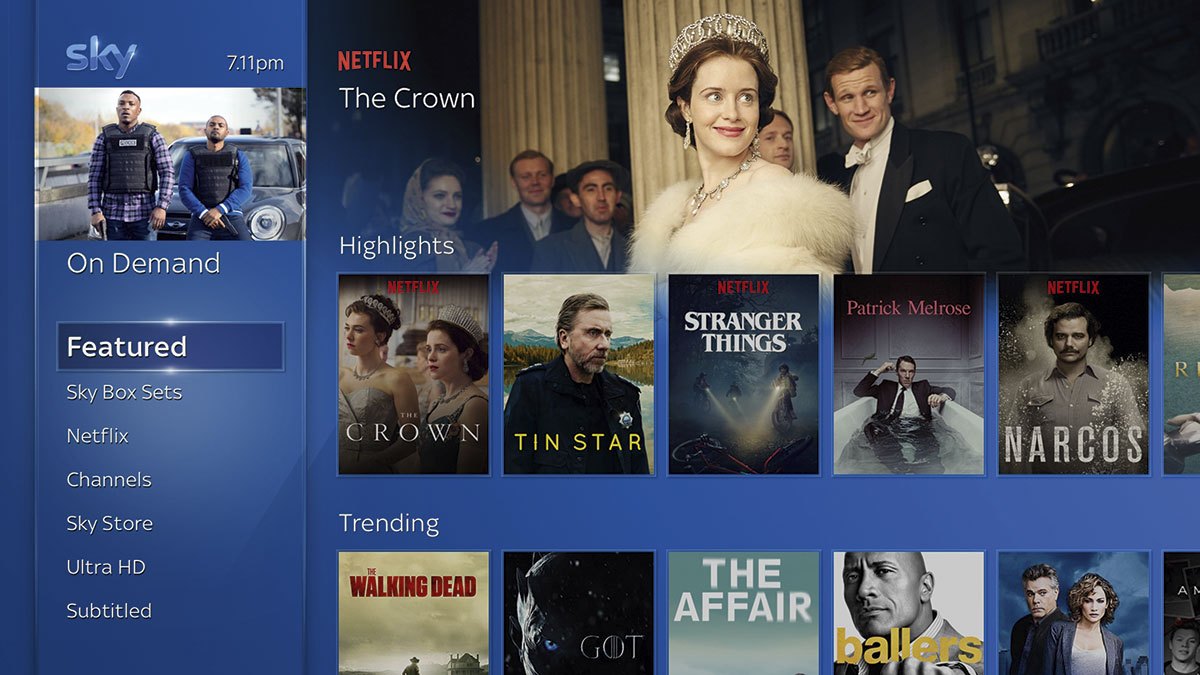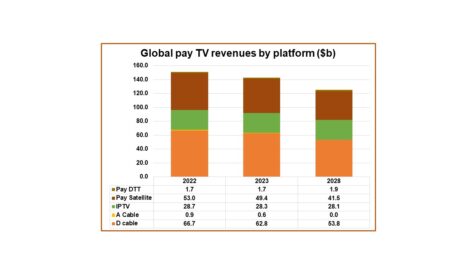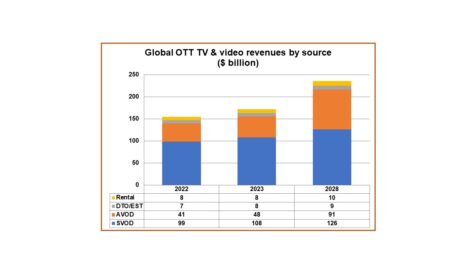
After more than 40 years of operation, DTVE is closing its doors and our website will no longer be updated daily. Thank you for all of your support.
Artificial intelligence’s genuine impact
 Automation is affecting every aspect of modern living and TV is no different. Jonathan Easton examines the role that AI is playing in the user experience and how ‘the algorithm’ has quietly revolutionised the way we view content.
Automation is affecting every aspect of modern living and TV is no different. Jonathan Easton examines the role that AI is playing in the user experience and how ‘the algorithm’ has quietly revolutionised the way we view content.
Every few years, a new fad takes the industry by storm. In the early part of this decade it was 3D, and after that it was virtual reality, augmented reality and everything in between.
Seasons change, and invariably the last big thing drops out of the zeitgeist in favour of the new shiny gimmick. But artificial intelligence (AI) is no such fad. AI is not being marketed as a selling point for consumers, and its success to date is linked to how discreet its impact is on the TV user experience.
There is, of course, the more visible manifestation of AI in voice assistants, but that is largely about control. Requests like “show me live sports”, or “what’s the weather?” are reliant on AI to handle the request, but this is mostly about language processing to get to a fixed outcome.
In terms of the day-to-day user experience of TV, good AI is unseen and unheard.
However, before diving into what this AI is achieving in real world terms, one of the first hurdles is actually figuring out what AI – a fuzzy and historically ill-defined term – actually means.
Quite unsurprisingly, this depends on who you speak to.
Defining AI
“It’s a particularly broad term,” admits Jon Ducker, head of product management at Digital UK. “For us, AI represents any technology that can be used to drive automated, complex decision making without requiring low level human input at the individual decision level. So, in TV this could manifest as anything from voice assistants and recommendation engines processing TV requests, through to more operational applications of AI such as automated webchat services.”
Marcus Bergström, CEO of OTT video platform vendor Vionlabs has a similarly succinct summary: “We define AI as: trained by humans and then perfected and enhanced through continuous and exponential machine learning.”
TiVo’s head of product for personalised content discovery Chris Ambrozic is more concerned with defining machine learning and AI by how they relate to other aspects of business.
We define AI as: trained by humans and then perfected and enhanced through continuous and exponential machine learning. Marcus Bergström, Vionlabs
“I have a very technical way that I define machine learning and AI,” he says, “Machine learning is defined by matrix factorisation [algorithms used in recommendation systems] and being able to reduce a variety of data sets to an interesting signal for a variety of business purposes. On the AI side, it comes down to neural net [a computing system that learns based on previous examples], which is really good at predicting things but not so good when you try to use that to understand what’s happening and why.”
AI’s purpose can loosely be summarised as algorithmically-driven automation that drives the improvement of services from both a business and user perspective.
The most prominent way this is being experienced by users is, as Ducker says, through voice assistants and personalised content curation.
Caroline Cardozo, head of content, discovery and personalisation at Sky says that the latter is simply an extension of its role as a platform operator.
“We know from speaking to our customers that they expect us to recommend content to them,” she says. “As we learn more about our customers’ behaviours we’re using AI to adapt and tailor the experience. We want the shows we’re recommending not only match our customers’ tastes but to also create a sense of serendipity when they discover something completely new that they may not otherwise have given a second thought to. Be it the latest drama on the home page or content recommendations for movies similar to those you have watched before, artificial intelligence is making the customer experience more relevant. And by gathering continuous feedback, we’re able to see trends, adjust and pivot to continually challenge and improve the experience.”
Updating old patterns
It is clear just how much AI has changed the measurement of user activity and popularity of content.
Organisations like BARB in the UK and Nielsen in the US have spent the better part of a century using relatively similar measurement tools for gauging the success of shows and networks. The story more or less begins and ends with how many people watched a particular bit of linear programming, and its success is defined by this. This measurement has since extended to online viewing (BARB now cites the two as discrete sources of data), but the lesson learned by broadcasters has always been to simply make more of the successful content and less of the rest.
But while much stock is placed in these ratings, they only paint part of the picture – and AI is illuminating the rest.
There is one word that repeatedly comes up when talking to industry figures about AI: context.
Context, with traditional linear programming, is mostly derived from holistic knowledge of broadcast schedules. For example, a particular show might perform poorly if it’s pitted against a sports event or aired on a bank holiday.
But AI is able to provide a lot more information, and by extension a greater degree of context to actions both in terms of set-top box interactivity and OTT VOD services.
What show did the user watch? Did they watch the entire thing or turn it off mid-way through? Is the show similar to other content they watch? What did they watch before and after? What day and time did they watch the show?
“The team uses machine learning when it’s not just a function of trying to predict something for somebody, it’s a matter of understanding what got them there,” says TiVo’s Chris Ambrozic.
“We can quite easily predict what you’re going to watch on a Tuesday night, but it’s an entirely different matter to be able to explain that in the context of why we think that’s the right prediction for you.”
By piecing together answers to these questions and more, an AI engine can passively create a profile to give greater prominence to content the user is more likely to be interested in, and conversely help content reach its target audience.
Ambrozic continues: “We’ll employ different strategies and tactics in order to help you find the content you’re looking for, and find it in a very efficient manner. We have algorithms that are very predictive in nature that are picking up on those signals.”
But AI is not just for content discovery in VOD, Bergström points out. “By accurately understanding the VOD content, the VOD library could actually be the foundation for creating hyper-personalised linear programming.”
This is a sentiment shared by Angelica Stephenson, senior manager, strategy and innovation at Sky. “In the future we could see automatically generated highlights of sports or entertainment being made for viewers, summarising what they’ve missed based on the topics they’ve shown they like,” she says. “There’s also the creation of bespoke channels and even promotional posters for TV shows and films in the EPG, that are specifically selected for the viewer.”
All of this however seems to suggest a somewhat problematic closed feedback loop that simply reinforces user behaviour rather than being truly innovative.
“Content management and recommendation systems today are more advanced than they used to be, and simplistic ‘personalised’ services recommending content based primarily on similar content are likely to have limited impact, particularly if they don’t understand much about the user or the viewing context,” says Ducker.
“The big win for AI, ironically, is to replicate those moments of serendipity we used to get when flicking through channels and discovering something awesome that we’d never heard of before through pure luck – or expert scheduling of course. In order to address this, companies can combine content recommendations algorithms with more traditional campaign management features, applying increased weighting to specific assets or content types. In this world, content promotion and content personalisation can easily become blurred.”
Blurred lines
Not all content is created equal, after all, and platform operators will want to ensure that their own content is seen by more people.
For example, Netflix pours hundreds of millions of dollars into its original content and as such has a reason to get as many eyes on those shows and movies as possible.
Ducker says that these AI content delivery systems are “still deployed, owned and supervised by human individuals working for companies with commercial interests.”
He continues: “Despite the friendly names and increasingly relatable voices on the front-end, it would be naive to think of AI in its various forms as a purely benign enhancement to our ongoing search for compelling programmes. They are, or at the very least have the capacity to be, biased towards the interests of the companies that have the most influence over them.”
From a content perspective this can lead to the platform operator’s content getting a better position, but AI can also be utilised by advertisers.
Contextual advertising is clearly an area of opportunity. Angelica Stephenson, Sky
Stephenson points out that, once again, context is key: “Contextual advertising is clearly an area of opportunity. For example, if the last scene before an ad break was distressing, AI could display ads offering tissues or ice-cream during the break. This is very of-the-moment experience which starts to really fine tune the idea of personalisation.”
While Stephenson’s example is fairly innocuous, many consumers are uneasy about data capture and companies selling their data.
Ducker once again favours erring on the side of caution, but believes that “customers understand and appreciate this, particularly when operators, as trusted brands, behave in a way that is transparent and open”.
“Data tracking is a sensitive subject, but the recent introduction of GDPR has really helped drive consumer awareness and understanding, and operators must now be much clearer about how and why customer data is being used. For responsible operators this can only be a good thing, and in embracing these changes we now have a fantastic opportunity to be clear about the benefits of personalised services,” he says.
Cutting churn
One of the biggest challenges facing the digital TV industry in this cord-cutting era is churn, and this is something that AI is also helping to mitigate.
“Today it’s much easier to get hold of data, but understanding what the data is actually telling us and getting value from it can be more challenging,” notes Cardozo. “Continually training models can take time while stakeholders want the business benefits realised relatively quickly. There is also still some way to go before predictions can be guaranteed to be 100% accurate. If customers don’t feel listened to or they feel the experience is no longer tailored to them then that could change their whole view of what they are paying for.”
Ambrozic believes that AI has a significant role to play in providing added context to churn and helping to prevent it.
“We don’t just want to know the fact that they may churn and give a prediction score for their propensity to churn, we also want to know why. If we can understand why, we can start to engage behaviours or drive a change in the behaviours that may actually impact their propensity to churn. This is where we see the utilisation of personalisation and strong metadata taking us,” she says.
“We can identify with a fair degree of accuracy individuals that have a propensity to churn, break that down and say the reason why we think these individuals are going to churn. From there, we can then feed that back to the marketing department and say ‘you might need to do some targeted outreach with these individuals to make them aware of content that is actually quite appropriate to them’.”
Whether it is cutting churn or enhancing content discovery, AI is already having a huge, and arguably irreversible, effect on how the user experiences TV.
While rules and regulations around data are likely to come under more scrutiny in the coming years in a post-Cambridge Analytica world, AI is here to stay. For operators, it is up to them to create a compelling user experience and earn the patronage of their users.



